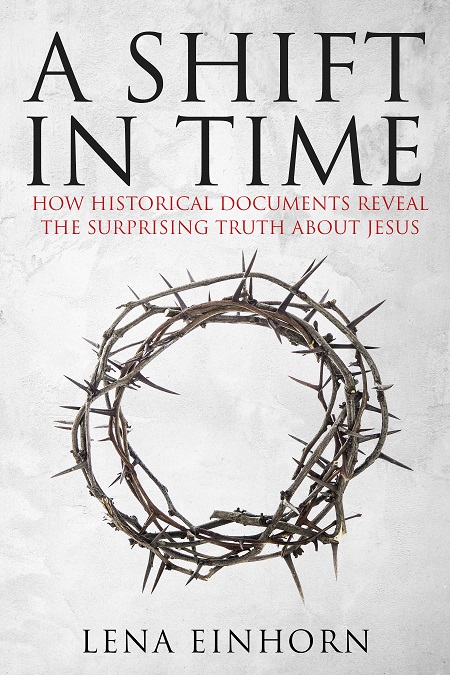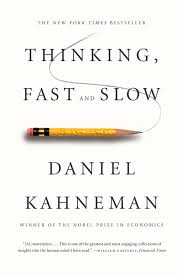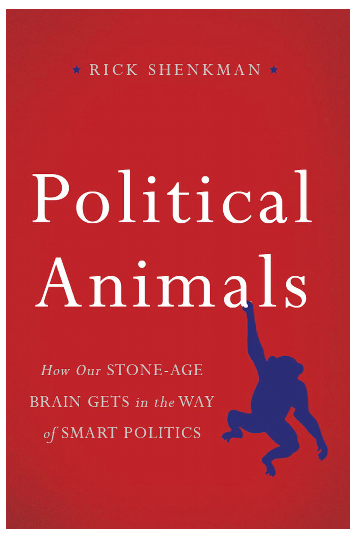For all posts in this series: Roger Parvus: A Simonian Origin for Christianity
It has been more than a year since I wrote the previous installment in this series. I have some excuses: new location, new job, and separation from well-stocked libraries. And also, I must admit, something unexpected happened during the break: I started losing interest in the early history of Christianity. So I have decided I had better try to bring this series to a close before I’m tempted to put it off altogether.
I have devoted most of the series to the Pauline letters. By now readers understand my general approach to those. I am still inclined to think that approach is correct, but I can’t say I am really comfortable with some of the particulars. Perhaps I will revisit the letters at some point. For now I want to skip ahead to the part of my theory that addresses Mark’s gospel. For me the biggest question is: where did the public ministry of the Markan Jesus come from? Paul, I have proposed, drew his beliefs about Jesus primarily from some version of the Ascension of Isaiah (see parts 7, 8 and 9). But in both extant versions of that work, and in the speculative alternative I offered, there is either no public ministry for Jesus at all or only one that is described by a single sentence. So it would seem that it was the author of Mark who first composed a public ministry for Jesus. Why did he put it together the way he did?.
Even though what follows is admittedly speculative, to my mind it seems the most likely scenario. In brief, I think the author of Mark was a Pauline Christian and his gospel was an allegory that presented Jesus as the forerunner of Paul.
|
Volkmar’s thesis
The idea that Mark is an allegory about Paul is not new. Gustav Volkmar first argued the case for this in 1857 (Die Religion Jesu) and again in 1870 (Die Evangelien, Oder Marcus und die Synopsis der kanonischen und ausserkanonischen Evangelien nach dem ältesten Text mit historisch-exegetischem Commentar). He was soon followed by others. Carl Holsten, for instance, and Moritiz Herman Schulze “approached the issue from different angles but agreed with Volkmar on the idea that the second Gospel is an apology for Paul by transferring Pauline theology ‘back’ into the sayings and doings of Jesus.” (Heike Omerzu, “Paul and Mark — Mark and Paul,” in Mark and Paul: Comparative Essays Part II — For and Against Pauline Influence on Mark, edited by Becker, Engberg-Pedersen, and Mueller, p. 52).
Volkmar’s thesis ultimately drove a wedge into German biblical scholarship . . . Werner perceived Volkmar’s work to be in line with other recently published books which treated Jesus as a purely mythical figure.
Volkmar’s thesis ultimately “drove a wedge into German biblical scholarship; Adolf Jülicher (1857-1938) and William Wrede (1859-1906) both appreciated Volkmar’s work, Albert Schweitzer (1875-1965) and his student Martin Werner (1887-1964) did not” (Anne Vig Skoven, “Mark as Allegorical Rewriting of Paul: Gustav’s Volkmar’s Understanding of the Gospel of Mark,” p. 14, from the same collection of essays referenced above). In 1923 Werner felt the need to write a book entirely devoted to refuting Volkmar’s views regarding Mark. He argued that Volkmar was guilty of allegoresis and that his work lent support to those who denied the historical existence of Jesus (although Volkmar himself never explicitly went that far).
In the preface to his book, Werner explains his worries about the consequences of Volkmar’s line of thought. Werner perceived Volkmar’s work to be in line with other recently published books which treated Jesus as a purely mythical figure. (Anne Vig Skoven, “Mark as Allegorical Rewriting of Paul: Gustav’s Volkmar’s Understanding of the Gospel of Mark,” p. 25)
Interest in Volkmar’s thesis did subsequently subside, although that may well have been due more to the advent of form criticism than to Werner’s rebuttal:
It has been suggested that Werner’s monograph put an end to the idea of Paulinism in Mark. I would argue that it was not so much Werner’s refutation itself as the rise of form criticism that sidetracked the line of inquiry that Volkmar had initiated. As we know, form criticism concentrated on the individual pericopes and traced their history backwards in search for their Sitz-im-Leben, but it took no interest in the gospels as complete works. It is quite telling that the interest in the relationship between Paul and Mark surfaces again with redaction criticism. Anglo-American scholars inclined toward literary readings like Joel Marcus and William Telford have long advocated for ideas that resemble Volkmar’s readings. (Anne Vig Skoven, “Mark as Allegorical Rewriting of Paul: Gustav’s Volkmar’s Understanding of the Gospel of Mark,” p.26)
 I have not read the books by Volkmar, Holsten and Schulze. My knowledge of German is so rudimentary that it would take me quite a while to work my way through those volumes. Maybe once I retire. But I have read an excellent book published in 2012 in English that reaches conclusions similar to theirs. Tom Dykstra, in his Mark, Canonizer of Paul, convincingly presents “the evidence for a literary relationship between Mark and Paul’s letters” (p. 27). He examines this relationship in a number of themes shared by Mark and Paul, especially their defense of the Gentile mission, their emphasis on a crucified Christ, and their discrediting of Jesus’ disciples and family. He argues too that there are allusions to Paul in the main parables and ending of Mark, as well as appropriations of Paul’s language and examples throughout that gospel. Dykstra concludes that Mark has in effect modeled his Jesus after Paul:
I have not read the books by Volkmar, Holsten and Schulze. My knowledge of German is so rudimentary that it would take me quite a while to work my way through those volumes. Maybe once I retire. But I have read an excellent book published in 2012 in English that reaches conclusions similar to theirs. Tom Dykstra, in his Mark, Canonizer of Paul, convincingly presents “the evidence for a literary relationship between Mark and Paul’s letters” (p. 27). He examines this relationship in a number of themes shared by Mark and Paul, especially their defense of the Gentile mission, their emphasis on a crucified Christ, and their discrediting of Jesus’ disciples and family. He argues too that there are allusions to Paul in the main parables and ending of Mark, as well as appropriations of Paul’s language and examples throughout that gospel. Dykstra concludes that Mark has in effect modeled his Jesus after Paul:
Mark deliberately created a literary Jesus whose words and actions parallel the words and actions of Paul. Mark’s Jesus defends the Gentile mission before the fact, in the face of opposition from his disciples, just as Paul defended his Gentile mission in the face of opposition from the ‘pillars,’ some of whom were reputed to have been among those disciples. To make this connection Mark portrayed Jesus leading reluctant disciples to Galilee, visiting other Gentile lands, interacting positively with individual Gentiles, performing miracles of feeding for mixed Jewish-Gentile crowds, insisting that recalcitrant disciples stop preventing children from reaching him, narrating parables, and so forth. (pp. 149-150)
Mark’s portrayal of Jesus was fashioned to provide a divine advance validation for Paul and his teaching
I cannot here do justice to all the parallels Dyskstra uncovers between Mark and Paul. I urge those interested to read his book. I find myself in agreement with much of his analysis. Like him, I think Mark’s portrayal of Jesus was fashioned to provide a divine advance validation for Paul and his teaching. As I see it, however, the Jesus episodes were intended to function more like prefigurations or foreshadowings of Paul. Some of them were intended to be within the reach of any Christian. Others were meant to be fully understood only by members of the Markan community. As an example of the first type I offer Jesus’ eating with Jewish sinners (Mk. 2:16). It likely served to prefigure/foreshadow Paul’s extension of this conduct to meals with Gentile sinners (Gal. 2:12 & 15). Similarly for Jesus’ breaking of Sabbath regulations (Mk. 2:24) and Paul’s extension of this to disregard for observance of all Jewish holy days (Gal. 4:10-11) Likewise for Jesus’ dismissal of defilement by foods (Mk. 7:15) and Paul’s lack of any fundamental problem with eating even meat that had been offered to idols (1 Cor. 8:1-7). But, as we will see, there are many other episodes that seem to be deliberately shrouded in secrecy.
This could explain a puzzling feature of Mark
Now in all these cases Paul never tries to justify his conduct by appealing to similar precedents set by Jesus. With Dykstra, I think the reason is because there were no precedents. As I see it, the author of Mark sought to remedy this situation by creating Jesus episodes that foreshadow, prefigure and thereby validate what Paul did and taught. This could also explain a puzzling feature of Mark: “the way it consists of a number of unrelated paragraphs set down one after another with very little organic connexion, almost like a series of snapshots placed side by side in a photograph album” (The Gospel of Saint Mark, by D.E. Nineham, p. 27). To account for this most scholars, including Nineham himself, have recourse to a tradition hypothesis. Mark, they surmise, was probably working with collections of traditional material about Jesus that consisted of essentially independent stories. But it seems to me that the disconnected character of Mark would be explained equally well by Volkmar’s allegorical hypothesis. In this scenario Mark’s primary focus was on Paul, not Jesus, so he had no interest in providing a connected and developed portrayal of Jesus. His focus was on constructing Jesus episodes whose value lay in the various ways they pointed to Paul. (For a good discussion about the problems with the oral tradition theory, see chapter 3 of Dykstra’s Mark, Canonizer of Paul). Continue reading “A Simonian Origin for Christianity, Part 16: Mark as Allegory”
Like this:
Like Loading...













